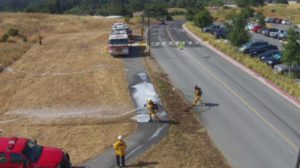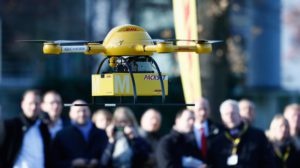Why Should I Get a Dronetag?
In the rapidly evolving world of unmanned aerial vehicles (UAVs), the importance of safety and regulation in the airspace cannot be overstated. This brings us to an essential question for drone enthusiasts and professionals alike: “Why should I get a Dronetag?” In this comprehensive guide, we delve into the world of Dronetags, highlighting their significance and how they are reshaping drone operations.
1. Understanding Dronetag: A Brief Overview
The Dronetag is a compact, remote identification device designed to make drone flying safer and more responsible. It’s an add-on for existing drones that lack built-in remote ID capability, providing a way to share your drone’s position and other relevant data in real time. This is crucial in crowded airspace zones and for adhering to evolving drone regulations.
To purchase a Dronetag, visit 1Updrones.com store, where you can explore various options, including the Dronetag Beacon and the Dronetag Mini.
2. The Need for Remote Identification
Remote identification acts like a digital license plate for drones. It’s a cornerstone for safe integration of drones into the airspace, allowing authorities and other airspace users to identify drones flying in their vicinity. This is especially important in areas with unmanned traffic management systems.
3. Features of the Dronetag
- Real-Time Data Transmission: The Dronetag app and beacon allow for real-time data sharing, including the drone’s location, altitude, and speed, essential for safe navigation and compliance with local regulations.
- Compatibility with Existing Drones: Dronetags offer remote ID capability to drones that weren’t originally equipped with this feature. This expands the range of drones that can comply with regulations.
- Wi-Fi and Network Remote Connectivity: These features ensure the Dronetag remains connected and functional in various environments, enhancing its reliability.
- Ease of Use: The Dronetag is user-friendly, easy to install, and integrates seamlessly with the Dronetag app for efficient operation and planning your flights.
4. Benefits of Using a Dronetag
- Regulatory Compliance: Many countries are moving towards mandatory remote ID requirements for drones. Using a Dronetag ensures you stay ahead of regulations.
- Increased Awareness: With the ability to browse real-time information about drones flying nearby, drone operators can make informed decisions, enhancing the overall safety of their operations.
- Enhanced Safety: By broadcasting remote ID information, Dronetags contribute to safer skies by preventing mid-air collisions and unauthorized drone operations in restricted areas. This is further augmented by the safety feature of being able to see other drones. However, it’s important to note that detecting other drones via the Dronetag app on your phone or notebook requires proximity close enough for visual line of sight. The Dronetag uses a low-power, short-distance WiFi signal, which is effective for nearby drone detection but does not substitute for vigilant visual monitoring.
5. Remote ID (RID) Technology and Its Evolution
Understanding the technology behind Remote ID (RID) is crucial in appreciating the role of Dronetag. RID is essentially a low-power, short-distance WiFi signal transmitted from the drone. This signal re-uses the WiFi equipment already onboard, which is typically used by drones to send back the video signal and facilitate communication between the controller and the drone.
This technology is why it was possible for older drones to acquire RID capabilities through a firmware update. However, only recent drones with extended flight ranges, like those equipped with Occusync, were suitable candidates for these updates. Older drones, which have less range and radio power, require the addition of external modules like the Dronetag to meet the RID requirements.
6. Choosing the Right Dronetag for Your Needs
Dronetag offers various models, such as the Dronetag Beacon and Dronetag Mini, catering to different needs and drone specifications. It’s essential to select a model that aligns with your drone’s capabilities and your flying requirements.
For a deeper understanding of the different models and their specifications, visit the official Dronetag website.
7. Conclusion
In conclusion, getting a Dronetag is a step towards responsible and safe drone flying. It’s not just about adhering to regulations but also about being a conscientious member of the drone community. As drone manufacturers continue to innovate, tools like the Dronetag are pivotal in bridging the gap between technology and safety.
Final Thoughts
We invite you to explore the world of Dronetags and discover how they can enhance your drone safety. For more information and to get your own Dronetag, visit our store.


